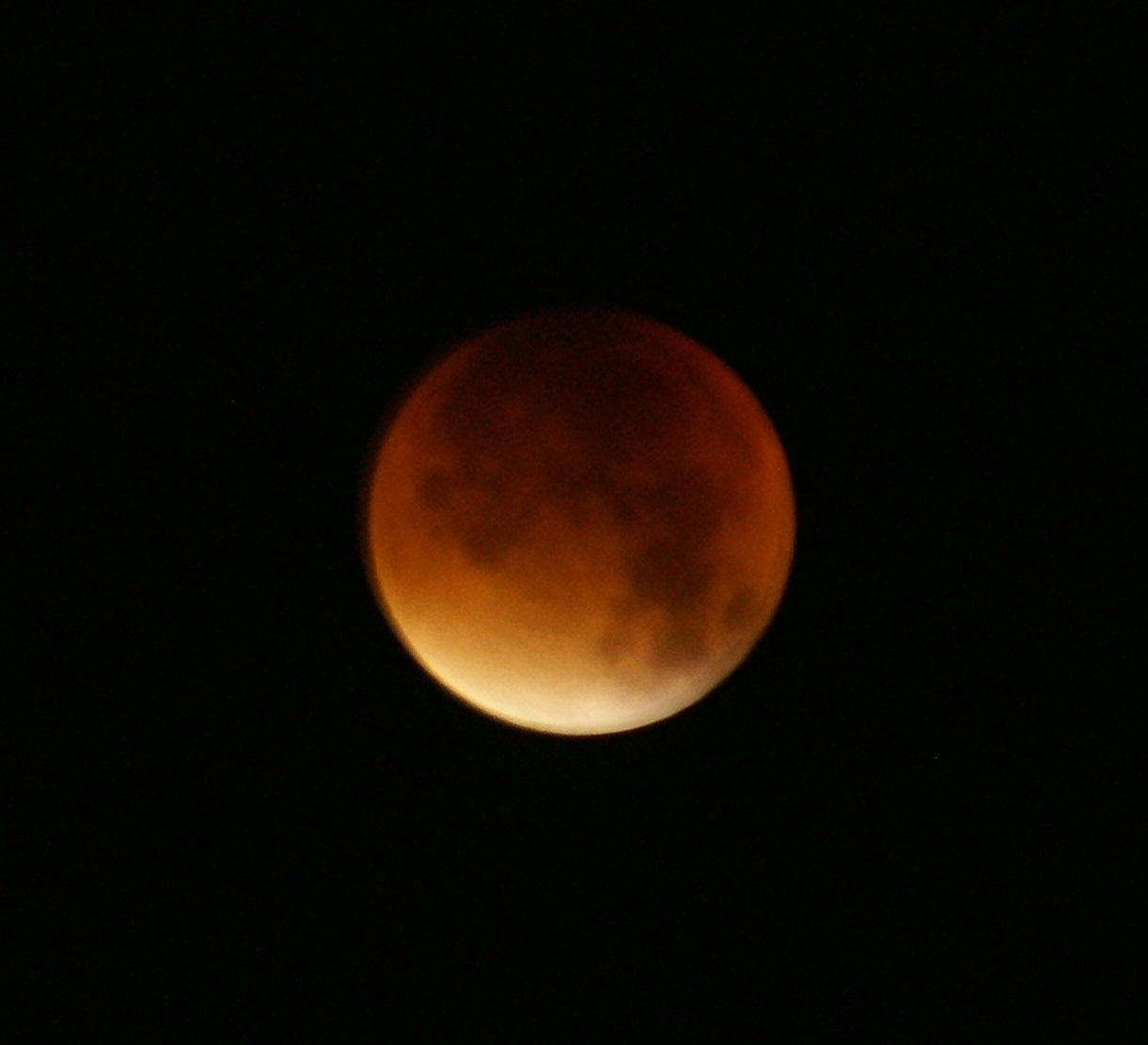
The skies over London were beautifully clear for tonight’s astronomical event. A total lunar eclipse, not exactly a rare event but uncommon enough, coincided rather well with perigee, the Moon’s closest approach to Earth.
A family member with good Greek observed that “peri” means “around” rather than close, making perigee an odd opposite for apogee, but there it is.
In the evening before the eclipse, the full Moon appeared as an exceptionally large, exceptionally bright disk. The rather ridiculous term ‘Supermoon‘ seemed not entirely inappropriate.
A little after 3 am, the moon slipped from the Earth’s penumbra into its umbra and, its disk some 10% larger than usual, appeared to be big and a handsome coppery-orange, in other words distinctly red. The image is in its unadjusted colours, and the camera was as still as I could wedge it, which for a long exposure isn’t saying much, but it gives the feeling of looking for oneself in the middle of the night.
Very gradually the area of brighter yellow-orange at lower left diminished. The Moon’s disk became less and less bright, slowly losing colour. Then equally gradually, an area of brighter yellow-orange started to grow at upper left.
